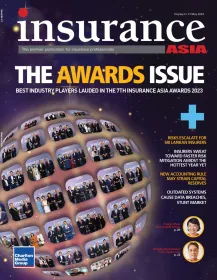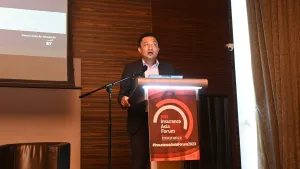Emergence of the InsurTech ecosystem in Asia
By George Kesselman2016 has been officially been declared the year of InsurTech. The marriage of insurance and technology infused with entrepreneurial energy, InsurTech is attracting significant investments from the likes of sophisticated VCs who founded the new economy players like AirBnB and Uber.
Entrepreneurs and corporate insurers have all taken active notice and are exploring ways to learn and be part of this exciting wave of change. At the same time the banking related FinTech, consisting of payments, FX and investments are all seeing a cooling down of interest as the FinTech hype curve has reached its peak last year and funding is now generally seeing a decline in 2016. This article focuses on insights relating to the InsurTech Ecosystem in Asia.
Four flavors of InsurTech
First, let’s revisit the definition of InsurTech to make sure we are all on the same page. Similar to FinTech there is a multitude of areas in insurance that technology can enhance or disrupt. Essentially, there are three major camps of InsurTech: one that enhances existing insurance structures, another one that aims to disrupt by providing alternative digital risk transfer mechanisms, and the third type coming from existing insurance firms attempting to defend their existing market positions.
The first and third types broadly can be broken into the following sub-types, while the second type attempts to drive an end-to-end structural innovation, either removing part of the structure or fully digitising it.
- Product Sales / Distribution (Aggregators, Online Portals, Lead Generation Apps)
- Risk Management (IoT, HealthTech, Blockchain)
- Fraud Detection / Prevention (Big Data, Machine Learning)
- Claims Management (Big Data, Machine Learning, Vendor Network Management Solutions)
- Service Management (Chat Bots)
- Investment Management (Portfolio Optimization, Asset Liability Management)
Why Asia for InsurTech
Asia is attractive from both, an insurer and an InsurTech perspective due to the size of its significantly underinsured population. The region has traditionally seen a large part of the risks self-insured through family and community networks. As the region experiences rapid growth in the affluence of its population, together with an aging population, the risk exposure is then becoming even more apparent and the need for alternative risk transfer mechanisms, including insurance, increase. InsurTech, alongside traditional insurance, can provide or enhance risk transfer need in the region.
Further, strengthening the case of InsurTech in Asia, there is the clear presence of a near-perfect locations for the launch of a program. Singapore is one of these, which allows for sandboxed experimentation, regulatory support and advanced tech infrastructure. From the demand side, limitations of traditional insurance distribution channels and the rapid increase of 4G mobile penetration means that insurers are also highly interested in exploring innovative partnerships that help them connect with potential customers.
Asia being a diverse region and having a mix of developed and emerging countries. It is worth noting the locations in Asia that have the greatest potential to drive a prolific InsurTech ecosystem. So far the major push for InsurTech has come from China, India, and Singapore and most recently Hong Kong, while Japan, Korea, and emerging Vietnam, Cambodia, Taiwan, Philippines, Thailand, Indonesia, Malaysia, and Burma have so far have slightly lagged on the InsurTech front. Among them Korea, Thailand, Malaysia and Philippines have started experience a pickup in startup ecosystem activity which is a major pre-cursor to InsurTech.
There’s China and then there’s everyone else when it comes to InsurTech. First, full stack (end-to-end) innovator Zhong An valued at a massive $8b and which raised $931m, accounts for more than a third of the global InsurTech funding in 2015. It is also worth mentioning TongJuBao (peer to peer) insurer and FWD (Asia’s second- ichest family’s insurance venture that is re-positioning itself from traditional insurer to an agile digital insurance competitor).
India is another vibrant Asian insurance market that has seen its InsurTech innovation focus mostly on distribution. Not surprisingly, two of the biggest insurance aggregators come from that market: Policy Bazaar and CoverFox have seen healthy level of customer take-up as well as VC funding. Interestingly and logically so, CoverFox has recently expanded its service proposition, now assisting customers with their insurance claims.
Early days
In summary, Asia is a region to watch when it comes to InsurTech. Whether it being the home-grown insurance innovation from China, India, and Singapore or innovation concepts imported from elsewhere and deployed in Asia, the region is likely to deliver a vibrant InsurTech ecosystem during the course of the next two to three years. And when the dust and excitement settles down five years down the road, we’ll have a fundamentally stronger set of competitors.












 Advertise
Advertise












